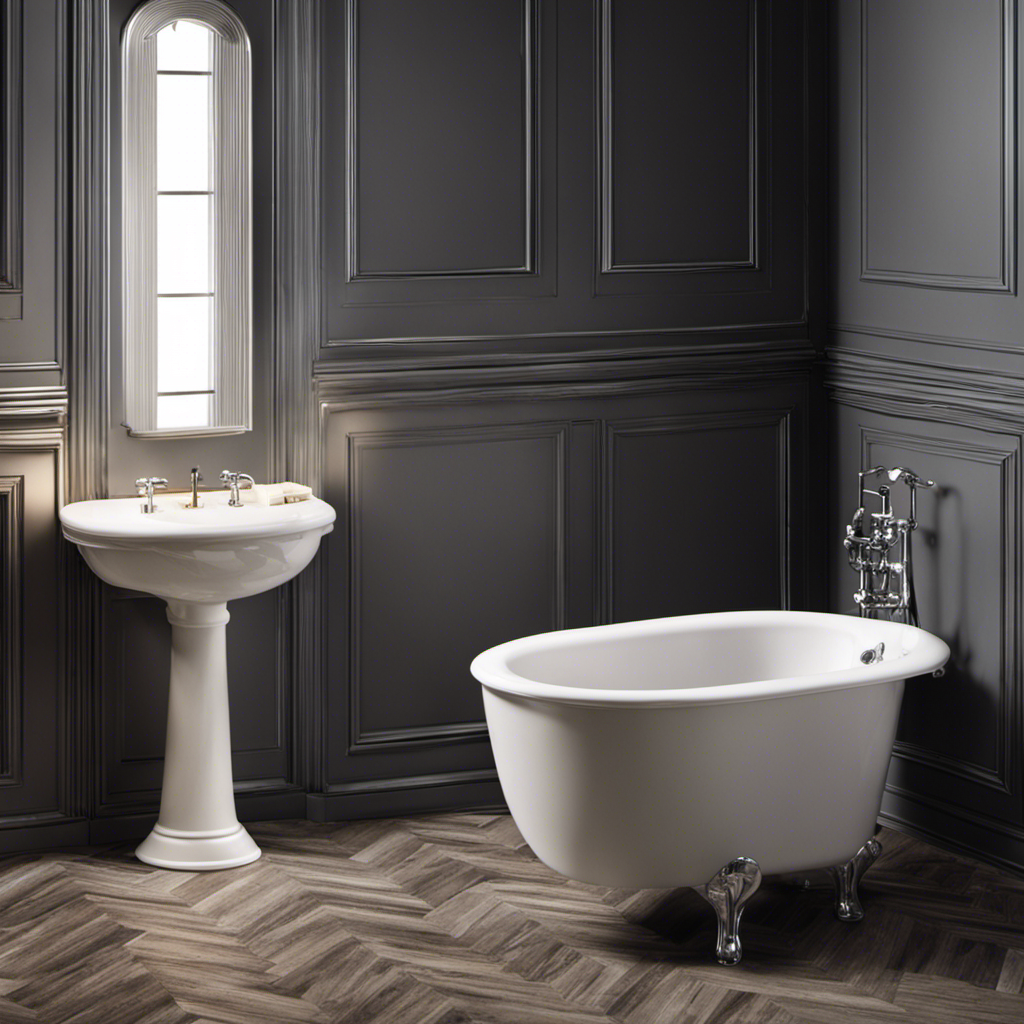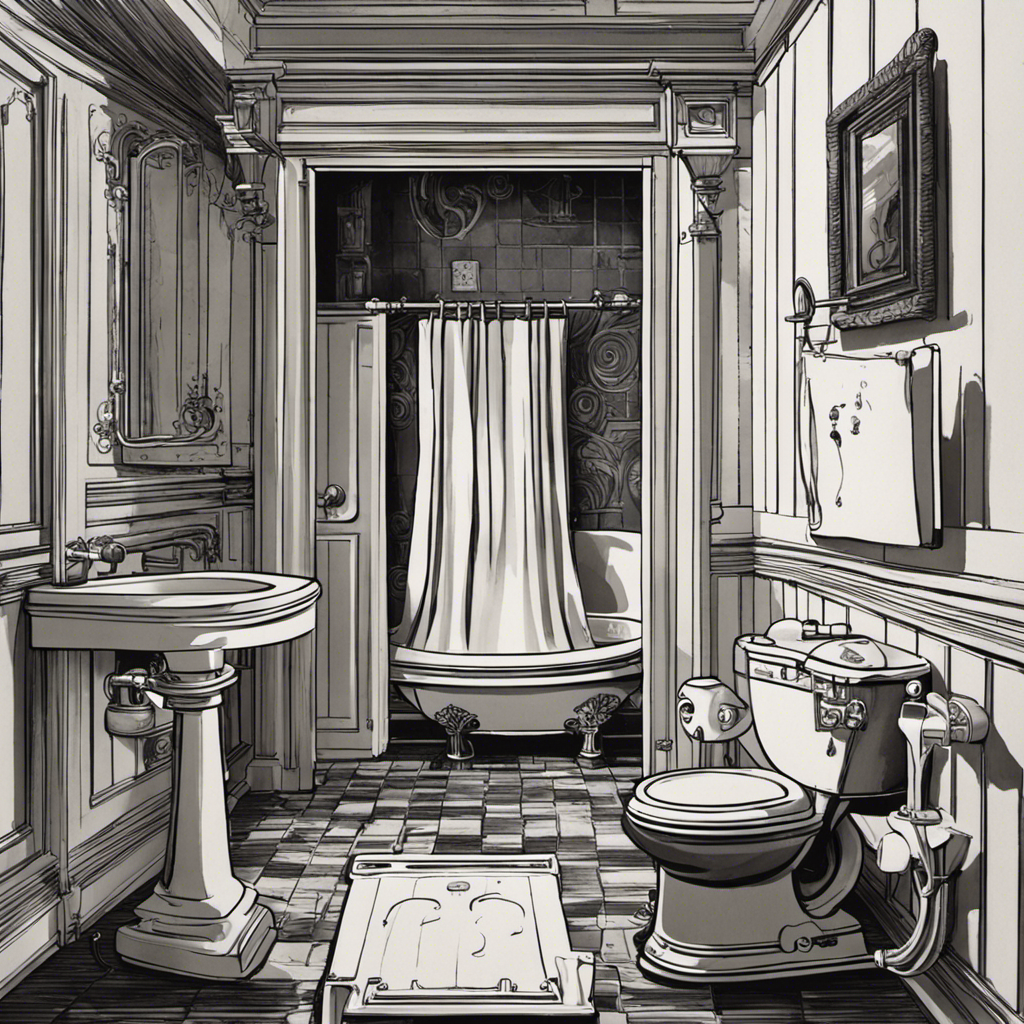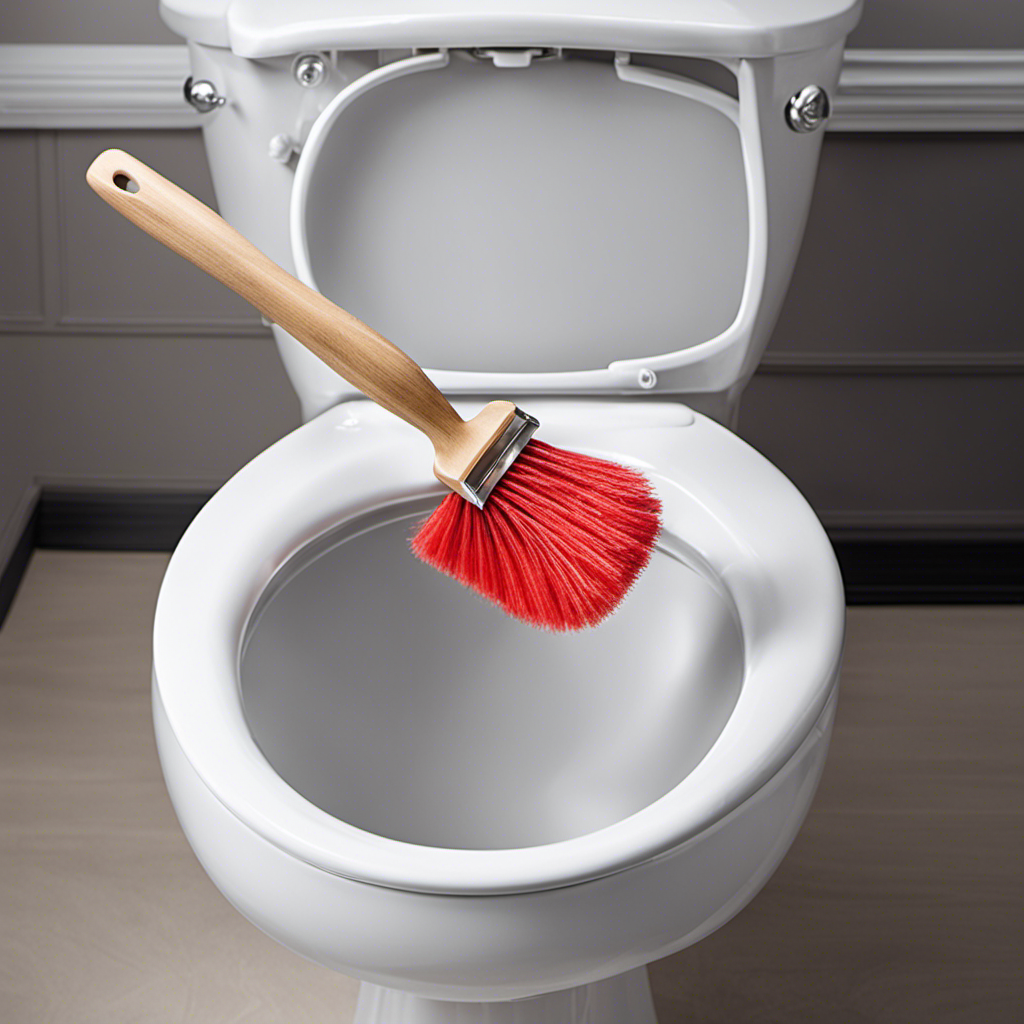When I flush the toilet, a strange and unsettling sound echoes through my bathroom: the gurgling of my tub. It’s as if the plumbing system is trying to communicate with me, revealing a hidden world of interconnected pipes and vents.
In this article, we will explore the common causes of tub gurgling and the role of ventilation in plumbing. Additionally, we will discuss potential issues with toilet flushing and provide methods to prevent this disconcerting phenomenon.
Get ready to dive into the depths of your plumbing system and uncover the secrets behind this mysterious tub gurgle.
Key Takeaways
- Tub gurgling when flushing the toilet can be caused by various issues such as clogged drains, improper pipe installation, and poorly installed vent pipes.
- Insufficient water pressure and faulty flapper valves can also lead to incomplete flushing and continuous water flow, respectively.
- Blocked sewer lines and slow flushing can result from foreign objects or excessive toilet paper clogging the toilet.
- Regular maintenance and proper functioning of the plumbing system, including ventilation, are crucial in preventing tub gurgling and maintaining smooth operation.
Common Causes of Tub Gurgling
One common cause of tub gurgling is a clogged drain. When debris, such as hair, soap scum, or foreign objects, accumulate in the drainpipe, it can obstruct the flow of water and cause gurgling noises. A drain blockage can also lead to slow drainage or even complete backup, resulting in unpleasant odors and potential water damage.
Another cause of tub gurgling is improper pipe installation. If the pipes are not properly aligned or if there are bends or dips in the pipes, it can create air pockets, which can cause gurgling sounds when water flows through them. Additionally, poorly installed vent pipes can also contribute to tub gurgling by preventing the proper release of air pressure.
It is important to address these issues promptly to prevent further damage and ensure the proper functioning of your plumbing system.
How Plumbing Systems Are Connected
When you have a plumbing system in your home, all the pipes are interconnected, allowing water and air to flow between different fixtures. These plumbing connections are crucial for the proper functioning of your plumbing system.
The main purpose of these connections is to ensure a smooth and uninterrupted flow of water throughout your home. Each fixture, such as sinks, toilets, and showers, is connected to a main water supply line, which is then connected to a network of pipes that distribute the water throughout the house.
Additionally, there are drain lines that are connected to each fixture to carry away wastewater. The interconnected nature of the plumbing system allows for the efficient and effective flow of water, ensuring that each fixture receives the necessary supply and that wastewater is properly disposed of.
The Role of Ventilation in Plumbing
To ensure the proper functioning of your plumbing system, it’s important to understand the role of ventilation. Ventilation allows air to flow through the pipes and prevent issues like clogs or slow drainage.
Proper ventilation is crucial because it helps maintain the right balance of pressure in the system. When wastewater flows through the pipes, it creates pressure that needs to be equalized. Ventilation pipes allow air to enter and exit the plumbing system, which helps maintain this pressure balance.
Without adequate ventilation, several issues can arise. Firstly, clogs can occur more frequently as air cannot flow freely, leading to trapped debris and blockages. Secondly, slow drainage becomes a common problem as the lack of ventilation restricts the movement of wastewater.
Inadequate ventilation can also cause gurgling noises and unpleasant odors in your plumbing system. Understanding the importance of proper ventilation is essential in preventing these issues and ensuring the smooth operation of your plumbing system.
Now, let’s delve into the potential issues with toilet flushing and how they can be resolved.
Potential Issues With Toilet Flushing
Understanding the potential issues with toilet flushing is important for maintaining the proper functioning of your plumbing system. Here are four common problems that can arise from toilet flushing:
-
Toilet clogs: When excessive toilet paper or foreign objects are flushed, it can lead to clogs in the pipes, causing water to back up and potentially overflow.
-
Insufficient water pressure: Low water pressure can result in incomplete flushing, leaving waste behind and increasing the likelihood of clogs.
-
Faulty flapper valve: If the flapper valve doesn’t seal properly after flushing, water can continuously run into the toilet bowl, wasting water and potentially causing clogs.
-
Blocked sewer line: A blocked sewer line can prevent proper drainage, leading to slow flushing and potential clogs.
By understanding these potential issues, you can take proactive measures to prevent toilet clogs and maintain optimal water pressure.
Now, let’s explore methods to prevent tub gurgling and ensure a well-functioning plumbing system.
Methods to Prevent Tub Gurgling
One way to prevent tub gurgling is by regularly cleaning the drain and removing any debris that could cause blockages. Proper plumbing maintenance is crucial to avoid this issue.
Start by removing the drain cover and using a drain snake or wire brush to clear out any hair, soap scum, or other buildup that may be clogging the drain. Be sure to flush the drain with hot water to ensure everything is cleared out completely.
Additionally, adjusting the water pressure can help prevent tub gurgling. High water pressure can cause air bubbles to form in the plumbing system, resulting in gurgling noises. Consider installing a pressure regulator or contacting a professional plumber to adjust the water pressure to a suitable level.
Conclusion
In conclusion, the gurgling sound in your tub when you flush the toilet can be caused by various factors such as a blocked vent or a malfunctioning plumbing system. Understanding how these systems are interconnected is crucial in resolving the issue.
By ensuring proper ventilation and addressing potential problems with toilet flushing, you can prevent the tub from emitting these mysterious gurgles.
Think of your plumbing system as a symphony; each component plays a vital role, and when they harmonize perfectly, the gurgling will be silenced, leaving you with a smoothly flowing and serene bathroom experience.










